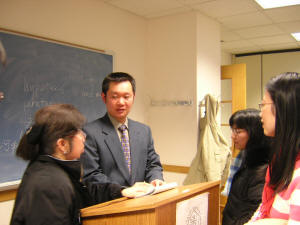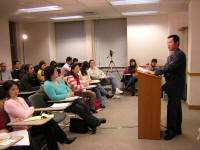An efficient way to teach a foreign language, especially to adults, is to compare it to their native language. A study of the linguistic differences between them will help locate the difficulties in the learning process, thus increasing the predictability and purposefulness in teaching. This contrastive analysis is also the basis for translation studies and theories. The so-called translation techniques invariably reflect the differences between the target and source languages. What’s more, the contrastive studies can also facilitate the communication between the people with different native languages, whose awareness of the linguistic differences can help them avoid mistakes and misunderstandings. The lecture will focus on the major differences between the Chinese and English languages and try to trace the cultural reasons behind them.



